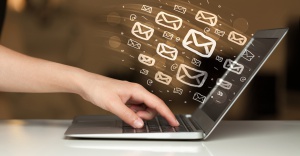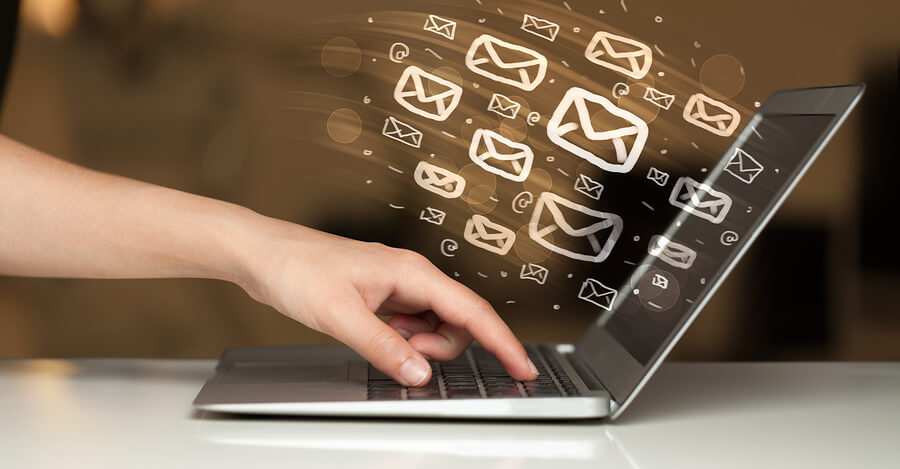Your company relies on a lot of different things to succeed, and one that you can’t overlook is your marketing efforts. Today, the use of email marketing personalization software can help businesses develop the best strategies and reach the best possible results with their marketing – but understanding why and how to get the most from it is something that’s often overlooked.
Getting real results from your email marketing is about more than just generating a list of names and addresses and sending out email blasts. Understanding how to get the most from your efforts will help ensure that you are able to really generate leads that turn into conversions – and that remain customers for some time.

Data, Not Lists
One of the most important things you can start by understanding is simple – when you are pushing towards getting the most from your email marketing personalization software you have to know the difference between lists and data.
Lists are nothing but a long list of names with email addresses beside them. That’s great – each one is a potential lead that could become a valued customer. But when you get right down to it, what can you do to personalize emails to those on that list? Not much.
Data, however, can be your best friend. Gathering information related to those names makes a huge impact on your ability to personalize messages and marketing. For example, you could take simple steps to get information like:
- Age
- Income level
- Location
- Interests
- And more
If there are specific things that related directly to your business, you can try to obtain that info as well. Then, once you have the info you need, you can start tailoring emails that directly target those who fit the right criteria.
So how do you go about getting that data? There are a lot of different approaches to doing so. You could ask for some additional info when requesting that users sign up for your email – an email address as well as age and interests, for instance. Or you could send out a short survey after they sign up that allows them to give you info that you can use later.
The key is not to make consumers feel as though you’re prying for info that they don’t want to give. Make your sign up lists invasive and simple, but give them the option to give you more info. If you want, you could even offer a discount code or freebie for completing your survey. Don’t overdo it, but do what you can to get the right info for your emails.
Using The Data You Have
No matter how much data and info you gather, the next step is putting it to work for your company. This begins by knowing your company’s target market for different products and services and then segmenting your shopper lists. You could group shoppers based on age, gender, interests, and more. Even if you are not asking for those pieces of information explicitly, you could still cluster audiences according to their behavioral data and then target them accordingly.
This is where the targeting comes into play – there’s no point sending an email about mascara to a man interested in camping supplies, right? Segmenting lists lets you create three or four different email promotions based on which will likely be the most effective for each group. You don’t have to write an individualized email for each person on your list, but automating the process of personalization makes a big difference.
Review all the info you have and compare it to each area of your business, then structure your email marketing pushes based accordingly. Doing so will help you generate interaction with shoppers that actually turn into conversions instead of just unread emails.
Getting Personal
But there’s more to effective, personalized email marketing than just segmenting your leads and sending out the right emails. Specifically, you need to get personal. Customers love to feel like they’re special and as though a company really values them and their business, and you can show them this through email if you take just a few simple steps.
- Send out emails to them on their birthdays. This can be just a short birthday greeting, but giving them a coupon or similar offer that is for their birthday only can make them feel truly special and help instill a sense of urgency in them as well.
- Follow up after a purchase. Sending an email that thanks them for their business is all it takes to help them feel special, but you can also send out emails asking them about their experience to let them know that you value their input and opinions.
- Thank you emails based solely on past purchases can help as well. Just a simple ‘Thanks for your business in the past, here’s a 10% off discount code just for you” message can bring lapsed leads back into the game.
- Pay attention to customer shopping habits, too. When you know what consumers are interested in you can send them targeted emails when a product that they’re interested in goes on sale, is introduced to market, or is running low in stock.
- Connect with them on social media. Including links in your emails can help them find you on Facebook or Twitter. From there, you can create meaningful interactions and engage in dialogues with your customers that can lead to stronger conversion rates and better loyalty.
The key here is to connect with your customers and show them that you value them. Form email blasts can make it seem like they’re just another number to you – getting personal can really make a difference in building loyalty and in improving your overall level of customer satisfaction.
Conclusion
Making the most of your email campaign is important, and while standard emails have their place it’s also important that you pay attention to personalization. Doing so can take some extra time, but it leads to big rewards that can help your business grow.
We can help you master the art of personalized targeted email marketing. Contact our team to find out more about what we can offer to you and how we can help you find the success you deserve.

